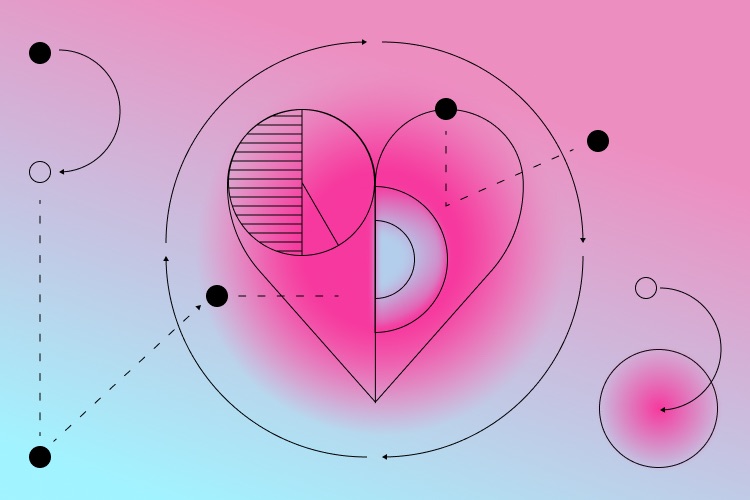Fundamental Interactions
Physicist Jonathan Butterworth on the term ‘fundamental’, the forces of the Standard model and why gravity is so hard to investigate
videos | May 21, 2020
Before starting to talk about fundamental interactions, it’s worth describing what the words mean in the context in which I use them. Interactions are simple: it just means that two things, instead of just going the wrong way, affect each other in some way, so particles scatter off each other, or electrons stick to a nucleus and make an atom. That’s an attractive force or a repulsive force or a bouncing off something; that’s what we mean by interaction.
‘Fundamental’ is a little more philosophically loaded. When particle physicists talk about fundamentals, they mean stuff that we haven’t seen on a deeper layer of structure than this. So, it’s always a little provisional because you never know; if you build a bigger experiment, you may see something different. For instance, we’ve known about electrons for more than a hundred years; they were discovered by J. J. Thompson in Cambridge just a bit towards the end of the 19th century. As far as we know, they’re fundamental, and what we mean by that is that in over a hundred years, we’ve never built an experiment that managed to break an electron, and we’ve never smashed an electron into pieces, never managed to resolve any kind of internal structure. As far as we can tell, they’re infinitely small: the very weird idea that you have infinitely small particles, but they are, as far as we can see. That’s what they are. We call that a fundamental particle. There was a time when people thought the proton was fundamental, but as you turn up the power of your experiment, you see that it’s not; it’s got things inside it; it’s got quarks inside it.
So you always have to bear in mind that if you build a better experiment you might find that the electron actually isn’t fundamental after all, there is something.
But what we really mean by that is provisional; when we say a force or a particle is fundamental, we mean it’s not made up of smaller constituents. There are forces like friction, for instance. It is not a fundamental force: friction is a real force; you can feel it; it keeps the car on the road; you know it’s real. But what friction actually really is, if you break friction down, if you look at it microscopically, you can say friction is actually a manifestation of the electromagnetic force. When the materials are rubbing against each other, and there are electromagnetic interactions between the electrons and atomic nuclei in the two materials, in the car tire and in the road, that is what’s providing the friction.
So friction is not a fundamental force; it’s a kind of large-scale manifestation of the electromagnetic force. So that’s what we mean by fundamental: if you try and break that force down any further, can you do that? Can you break it down any further, or does it stop? So electromagnetism is one of the fundamental forces as far as we know, and it’s carried by photons, which are essentially the particles of light. But photons are also responsible for magnetic fields, for the attraction between unlike electric charges; they’re responsible for friction in the end because they’re responsible for the electromagnetic force between materials that rub against each other.

The third force in the Standard model is called the weak nuclear force. It’s quite hard to say what that does because it’s not really seen as a force, it’s very short-range, and it only operates within the atomic nucleus, so it dies away before you go in there. It doesn’t really bind anything together. So, what’s the point of the force that doesn’t bind anything together? Well, it’s a force in the sense that it’s a fundamental interaction. For instance, you can have an up quark in an anti-down quark confused together and produce a W boson, which is a carrier of the weak force, and then that can decay to give you an electron and a neutrino. So you suddenly take on what were constituents of nuclear matter and make them into electrons and neutrinos. This is absolutely the key to the fusion interactions of the Sun; it’s basically how heavy particles decay into lighter particles most of the time. So it’s not seen really as a binding force, but it’s a very, very important fundamental interaction because without it, the Sun wouldn’t burn, for instance. Those are the three fundamental forces of the Standard model.
There’s a kind of elephant in the room, which is the reason we’re staying in the room and not floating up, which is gravity. Gravity is also a fundamental force as far as we know, but it doesn’t really feature in the Standard model. The reason for that is actually because it’s super weak: we call the weak force ‘weak’, but actually, the gravity is hugely weaker. That sounds like a kind of counterintuitive thing to say because gravity is actually the first force we’re aware of. There are two reasons that it’s the first force, the most obvious force that we’re aware of. One is that it’s cumulative, so there are no negative charges in gravity as far as we know.
The electromagnetic force of the Earth has as many positives as negatives, so we don’t see a net electromagnetic force from the Earth. But all the matter in the Earth, whether it’s positively charged or negatively charged, all has the same gravitational attraction, so it kind of adds up.
So, one of the reasons that gravity is obvious is that it’s cumulative; it doesn’t cancel itself out like the other forces do. We live near a very big mass on a big planet, and that’s how all the gravitational attraction of the Earth comes together and holds us on the Earth. And also, of course, we see the Earth going around the Sun, which is an even bigger gravitational attractor.
But think about it. What is it that makes my muscles work? It’s the electromagnetic force, basically, is chemistry, so it’s all governed by the swapping of electrons between various complicated molecules. That’s what makes your muscles contract; that’s those tiny little atomic-scale interactions that drive my muscles. I can pick a pen up against the whole massive gravitational attraction and the whole of the Earth. It shows you how much stronger the electromagnetic forces are than gravity. So although gravity is there in the background and clearly very important, on the scale of particle physics experiments where you see interactions between particles, between electrons with the same forces driving my muscles, the gravitational force is so much weaker than that; it just doesn’t impact our experiments at all.

That’s our theory of gravity, and it’s a fundamental theory, but it’s not a quantum theory. We know that if you go small enough in nature, nature behaves like quantum mechanics; it behaves not in this kind of continuous smooth classical analogy. There are the objects that you have to deal with, the quantum objects. If the atom was like a Solar system, it couldn’t be; it wouldn’t look like that at all. So, this idea of the atom as a nucleus with electrons going around is a classical analogy of the Sun with the Earth going around it. It just doesn’t work; you have to treat the electron as a quantum object, and you have to treat the nucleus as a quantum object in order to make these things stable at small distances.
So we know that you can’t just take gravity and expect gravity to still operate at very high energies and very small distances. We know that it must have some aspects of quantum mechanics playing a role, but we don’t know how; we have various theoretical ideas, and people are working on quantum gravity and the string theory.
People are trying to have ideas of how you can bring together gravity and quantum mechanics. It probably means you’ll have to modify both of them, there’s probably lessons to be learned on both sides. It may be that neither of them are really the right thing, neither of them are really all the interactions that we think of as fundamental at the moment, there may be some deeper layer of structure that we don’t understand. We don’t know at the moment.
It’s very hard to investigate experimentally because gravity is so weak, but things like this discovery of gravitational waves is a massive breakthrough. They’re predicted by general relativity, but the fact that we can see what is essentially like light from the stars, but it’s not coming from the wobbling electromagnetic field, but from the wobbling of space-time, it’s just fantastic. What that might reveal about the population of black holes in the Universe and how they behave and that might tell us, there’s still a lot more to learn and there’s hope that at some point, we’ll get some clues either from the mathematical and theory side or from actual data as to how gravity and quantum mechanics come together. There are actually ideas that even here, in this building, because we understand quantum mechanics so much better now, maybe you can build quantum systems that are so precise that they can actually start detecting gravitational waves, and maybe that’s getting to the point where we start actually seeing the quantum effects of gravity. Maybe you don’t need the huge hadron colliders and things to do that; maybe you can do it with these very precise things. But it’s an unknown, it’s the Wild West. We’re off the map now.





























